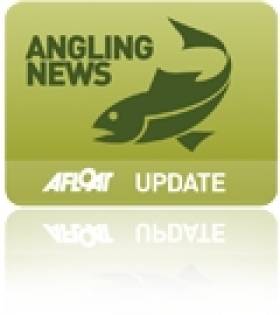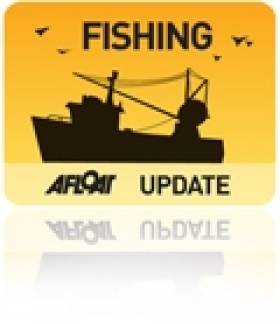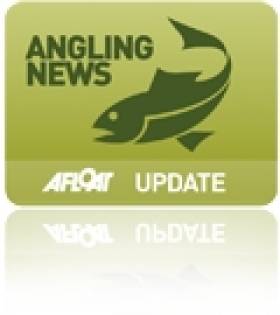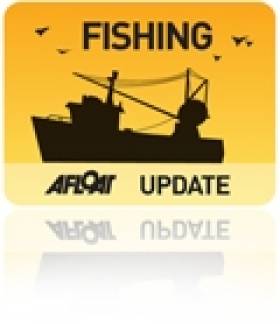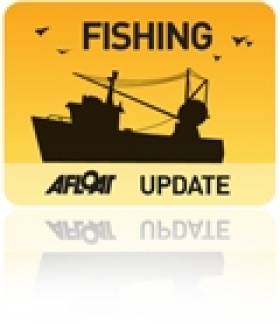Displaying items by tag: Eels
Eels Caught in Illegal French Trade Enduring Epic Journeys to China
Hundreds of millions of young eels carried about 3,500 miles every year on Atlantic currents to Europe then flown 5,400 miles further on to China, are at the heart of an illegal and growing French export trade, an eminent British eel expert said today.
They are just now starting to reach the French coast on the Bay of Biscay at the end of a two-year journey floating over from their breeding grounds in the Sargasso Sea south of Bermuda.
Andrew Kerr, chairman of the European Sustainable Eel Group said trawlers are waiting to scoop up the three-inch-long eels, known as elvers, as they seek to swim into the Adour, Gironde, Loire and other rivers to spend the next ten years there growing into adult eels.
Mr. Kerr said the illegal trade was thriving because the annual French quota for the tiny eels was set twice as high as the 30 tons the EU market needed. The 2015/2016 quota was 57 tons.
“This needless oversupply of elvers enables the illegal trade,” Mr. Kerr told experts in eel conservation from 12 European countries at an Institute of Fisheries Management (IFM) symposium in Peterborough. “In China and Asia eels are a delicacy on a par with shark fins and enormous sums are paid for the pleasure of eating them,” he said.
The trawling would go on from November until French regulators assessed this year’s quota had been caught. This could take until April 2016 but probably sooner.
Of the 30 tons of elvers used in the EU roughly half went to restocking waterways and half to human consumption.
International eel trading from EU countries is prohibited under the Convention on International Trade in Endangered Species (CITES). It lists eels as endangered and has been signed by most European countries, including France.
Mr. Kerr said that eels remained one level nearer extinction than tigers, pandas and snow leopards. The aim of the Sustainable Eel Group was to accelerate the recovery of the species.
“The fish illegally traded with China go to fish farms to grow for human consumption but never breed. If they remained in Europe we would have another 100 million eels each year for release into our waterways which would help boost the recovery programme.”
Since the 1990s the numbers of elvers surviving in Europe had fallen by 90 per cent mainly due to human activities on waterways blocking migration pathways by the building of hydropower and water pumping stations.
French police were making great efforts, Mr. Kerr added, and finding it “very difficult” to identify and prosecute organisations and individuals engaged in the trade with China.
In ten years’ time this year’s elvers by then adult silver eels, will begin the long swim back from Europe to their Atlantic breeding grounds to begin again to produce massive shoals of elvers to float off to Europe and to the trawlers waiting for them.
Ministers Welcome ESB Measures Over Elver Loss On River Erne
#InlandWaters - Minister for Natural Resources Joe McHugh and the NI Minister for Arts Culture and Leisure Caral Ni Chuilin have welcome the agreement completed by ESB with both departments to mitigate the loss of a quantity of elvers at ESB’s Cathaleen’s Fall hydroelectric plant on the River Erne.
“I want to commend ESB for the responsibility and diligence they have shown in agreeing a comprehensive package to mitigate the loss of elvers," said Minister McHugh.
“The package includes the purchase and release of eels into the sea and the extension of its highly successful 'trap and transport' programme on the Erne to carry eels around the Hydro Electric Plant.”
Both ministers were also briefed on the inter-agency protocol jointly developed by ESB, Northern Ireland's Department of Culture, Arts and Leisure (DCAL) and Inland Fisheries Ireland (IFI) around the entire operation of the trapping and release of eels at the plant.
“Key to any response to this incident is the requirement to minimise the risk of repeating it and that measures in place, North and South, to protect the vulnerable eel species are not undermined," said Minister Ni Chuilin.
“Officials in my department and IFI have agreed a new protocol to clarify roles and responsibilities regarding the operation of hydroelectric plant installations, and fisheries staff from both government organisations will assist in overseeing the monitoring of elver traps and the subsequent overland transport of them by ESB on the Erne catchment.”
Both ministers also were also happy that ESB had, since the incident, made considerable investment in a full upgrade of elver trapping facilities to the latest available technology at Cathaleen’s Fall.
This upgrade ensures enhanced aeration and storage facilities for collected elvers before release.
“ESB acted on the technology upgrade very quickly," said Minister McHugh. "I want to emphasise that a key element of the mitigation agreement also includes a commitment by ESB to keep operational matters under review in the light of future developments in technology.”
Minister Ni Chuilin stressed that in contemplation of potential mitigation options, both departments had sought the views of the Standing Scientific Committee on Eels (SSCE), which is composed of scientists from a range of organisations North and South acting in an independent advisory capacity.
“Independent scientific views on the effectiveness and adequacy of proposed mitigation measures to address the initial loss [are] essential for stakeholder confidence, and I trust that the new protocols which have been put in place will avoid any repeat of the incident which happened at Easter 2014,” she said.
IFI Invites Submissions On Eel Stock Management
#Eels - Inland Fisheries Ireland (IFI) invite submissions from interested parties on the following reports:
- Report on the Implementation of Eel Management Plans for Ireland, including the transboundary NWIRBD 2015
- Report from the independent Standing Scientific Committee on Eel 2015
- Report on IFI’s National Eel Monitoring Programme 2012-2014
These reports should be read in conjunction with the original report:
- National Report for Ireland on Eel Stock Recovery Plan - Including River Basin District Eel Management Plans
All the above documents are available for download from the Inland Fisheries Ireland website HERE or on CD-ROM from the address below.
These reports include the latest research and management information on eels in Ireland compiled over the last three years and updates the status of the stocks.
The management policy for eels in Ireland over the next three years will be determined from these reports and any relevant submissions received from interested parties.
Any party wishing to make a comment should send their submission on or before Wednesday 17 June 2015 to [email protected] or by post to:
Eel Submission, Inland Fisheries Ireland, 3044 Lake Drive, Citywest Business Campus, Dublin 24
#LoughNeagh - Families who have worked for generations in eel farming on Lough Neagh - putting the region on the map for its world-renowned eels – fear they are being pushed out of the industry by "unfair" policies, say campaigners.
And as Belfast Live reports, the authorities in charge of eel permits have also been accused of refusing to renew existing licences.
The Lough Neagh United Fishermen, or LNUF, says many long-time eel fishing families "grew up with the assurance that [they] would be 'looked after'".
Spokesperson Brian Wylie says his group's members also hold shares in the Lough Neagh Fishermen's Co-operative Society Ltd, which is authorised to issue permits for eel fishing.
"Our members are being ignored [by the co-operative] on a yearly basis, and can clearly see permits being handed out to people and their families never were involved in the ethos or concept," he adds.
Belfast Live has more on the story HERE.
Lough Neagh Eels Star Of The Show At NI Angling Fair
#Angling - Derry chef Emmett McCourt looks forward to giving visitors to the Northern Ireland Angling Show a taste of Lough Neagh's world-renowned eels this coming June.
As the top cook tells the Londonderry Sentinel: “Lough Neagh eels are revered around the world as the best there are - but people here [in Ireland] don’t generally eat them.”
McCourt wants to make them the star of the show at the angling expo, which was first held last summer alongside the popular Irish Game Fair on the shores of Ireland's biggest lake.
The joint events are expected to highlight the wealth of local produce and artisan food, not to mention recipes reflecting the traditions of the region.
The 2015 Irish Game Fair and Northern Ireland Angling Show take place over the weekend on 27 and 28 June at Shane’s Castle in Antrim.
#Seafood - Lough Neagh eels may no longer be protected by Brussels regional designation rules if a proposed free trade deal with North America goes through.
As the Belfast Telegraph reports, the lough's eels are among a number of foodstuffs in Northern Ireland that come under EU Protected Geographical Indication, which means that only products produced in a particular area – like Cornish pasties or parmesan cheese – can be named and marketed as such.
But German agriculture minister Christian Schmidt has said that such protections, which are not recognised in the United States, may have to be abandoned "if we want to take advantage of the opportunities of free trade with the huge American market".
The Belfast Telegraph has more on the story HERE.
NI Pays Tribute To Priest Who Pioneered Lough Neagh Eel Industry
#Fishing - Tributes have been paid to the driving force behind Europe's largest wild eel fishery in Lough Neagh.
As the Belfast Telegraph reports, Father Oliver Kennedy passed away yesterday at the age of 83.
Described by NI Agriculture Minister Michelle O'Neill as "an inspirational figure for Lough Neagh fishermen and their families", Fr Kennedy was chairman of the Lough Neagh Fishermen's Co-operative Society.
The priest co-founded the society in 1965 in an effort to assist local eel fishermen in asserting their rights on the lough - including fundraising efforts that enabled the fishermen to take control of Toome Eel Fishery.
The Belfast Telegraph has more on the story HERE.


























